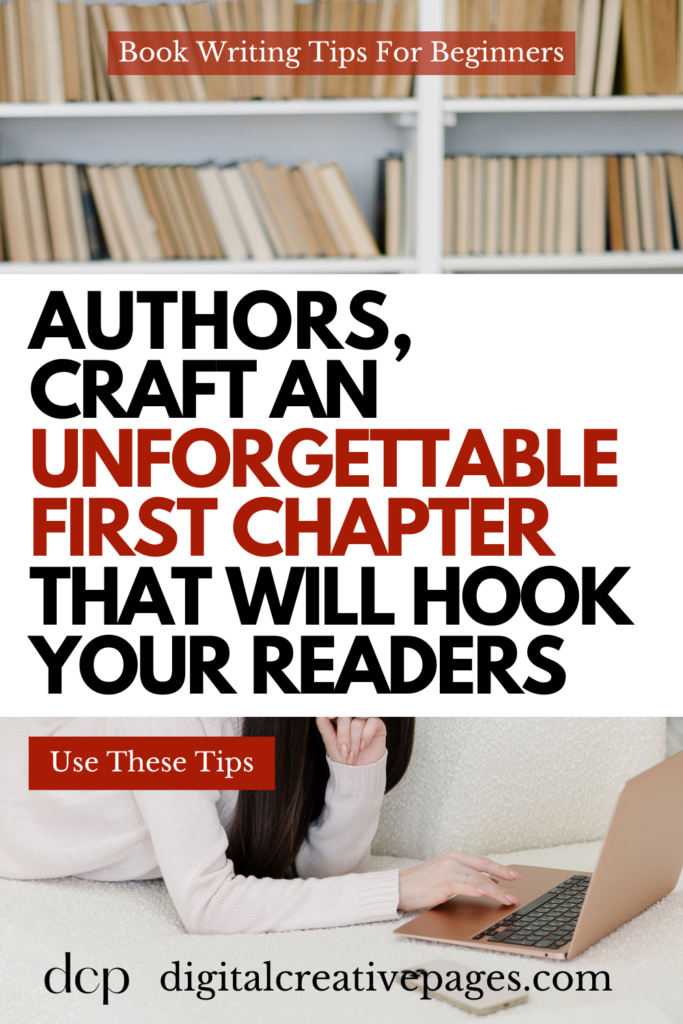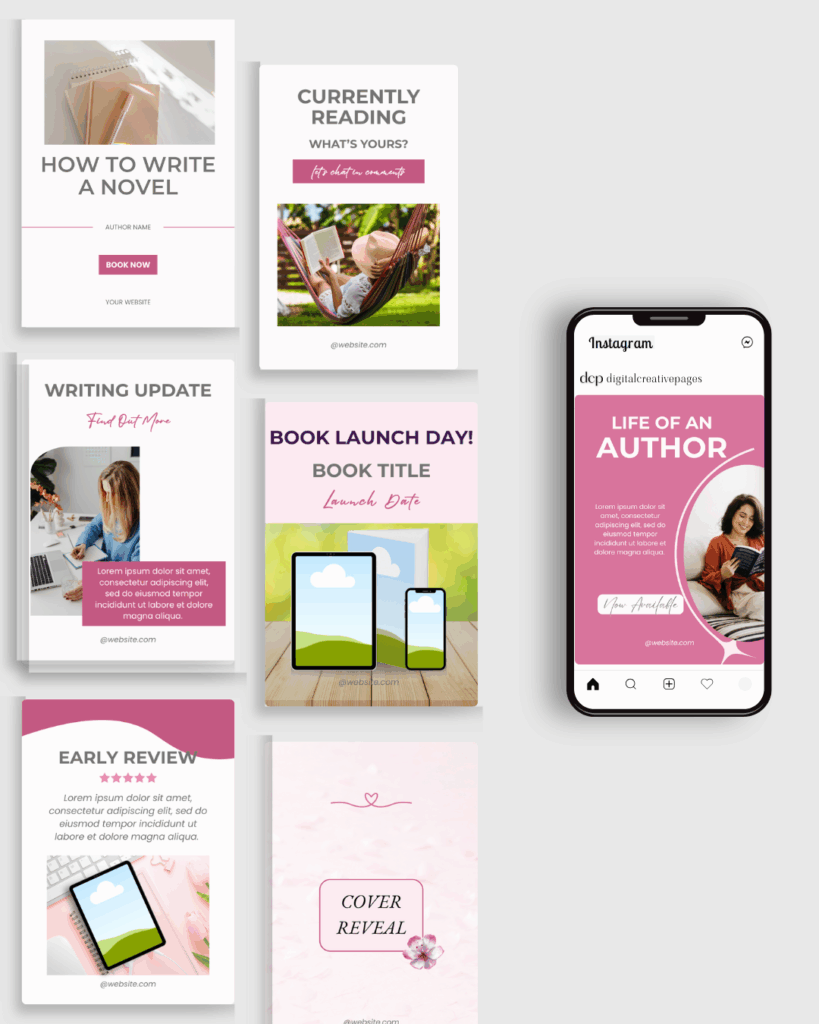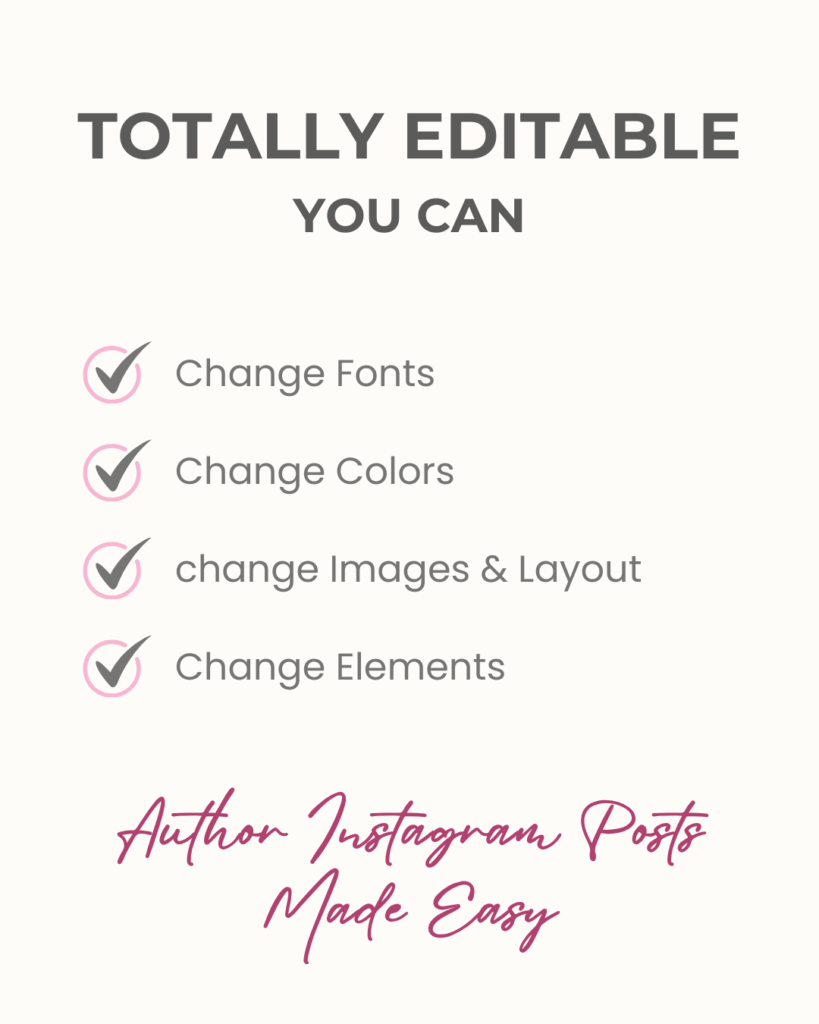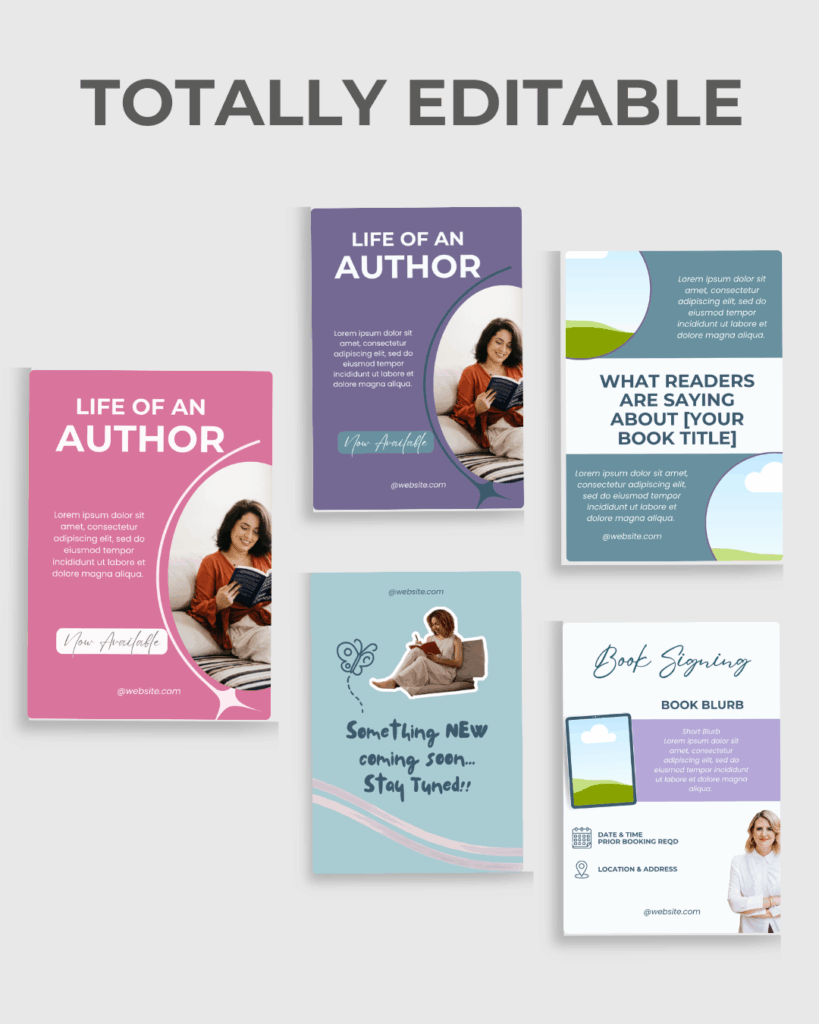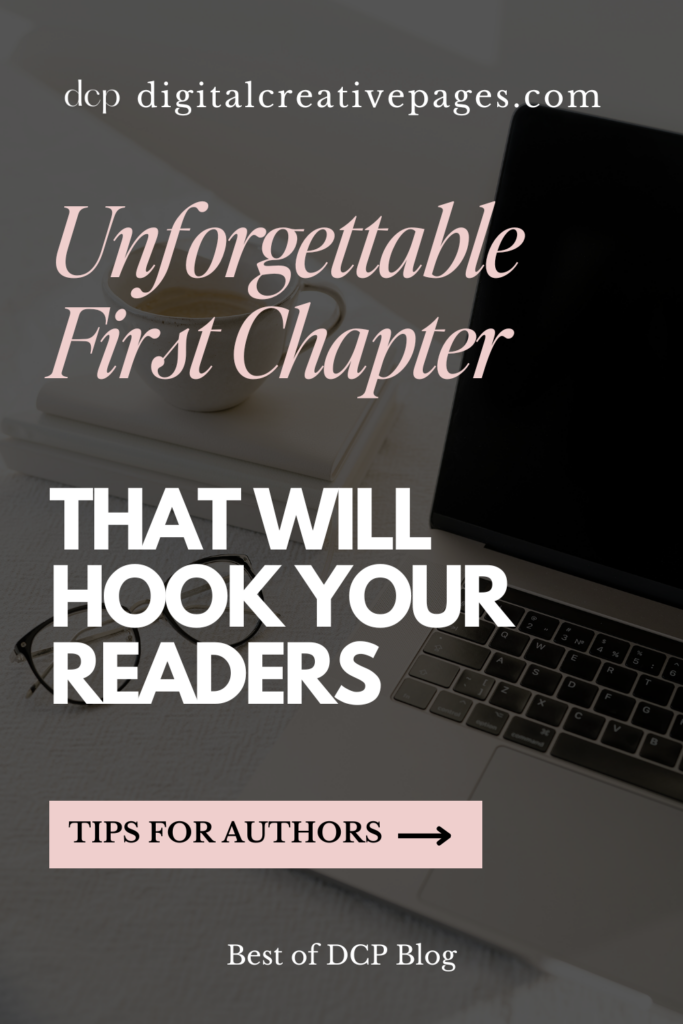Introduction
Hey there! Authors, your first chapter is your book’s handshake—it’s the introduction that decides whether a reader will journey with you to the end or move on to something else. Crafting an unforgettable first chapter is essential for hooking your readers, impressing literary agents, and setting the tone for your story. This post will walk you through the process with actionable tips, a conversational tone, and the kind of insight that turns your opening into a page-turner.
Pin this for later
1. Start With a Gripping Hook
The very first sentence of your book matters more than you think. It’s your chance to grab your reader’s attention and make them curious enough to keep going. A good hook isn’t just about shock value—it needs to resonate with the core of your story.
For example, opening with a line like, “It was the day I buried my brother for the second time,” immediately raises questions: Why a second time? What happened?
Your hook should promise intrigue, emotion, or action. It could be a shocking statement, a vivid description, or a thought-provoking question. Whatever you choose, ensure it ties back to your story’s central theme.
How To Start a Hook:
- Open with an intriguing question or statement.
- Use vivid imagery that pulls the reader into the scene.
- Introduce conflict or tension right away.
- Highlight a surprising or unique element of your story world.
Pro Tip: Avoid cliches like “It was a dark and stormy night.” Instead, aim for something fresh that reflects your story’s unique voice.
Want easy, practical content tips to grow your business? Join my weekly email list for Canva tricks, new social media updates, and simple strategies that actually work.
2. Introduce Your Protagonist Effectively
Readers need someone to root for. Your protagonist doesn’t have to be perfect, but they do need to be interesting. The first chapter should give readers a reason to care about your main character by showing what makes them tick.
Introduce your character in action or at a pivotal moment, and let their personality shine through. Avoid long descriptions of their physical appearance. Instead, show who they are through their decisions, dialogue, and thoughts.
Introducing Your Protagonist:
- Show your character doing something that reflects their personality.
- Highlight a key goal or conflict they’re facing.
- Use dialogue to reveal their voice and relationships.
- Provide hints about their flaws or internal struggles.
Pro Tip: Use the “show, don’t tell” technique. Instead of writing, “Sarah was brave,” show Sarah standing her ground against a bully or facing her fears.
3. Set the Stage With a Vivid Setting
Your setting isn’t just a backdrop; it’s an active part of your story. In your first chapter, immerse readers in your world by describing it in a way that engages the senses. Whether it’s a bustling city, a quiet forest, or an alien planet, make it feel alive.
Be careful not to overload your readers with too much detail. Instead, weave setting descriptions naturally into the action. For example, rather than listing everything in the room, describe the flickering neon sign that casts strange shadows on the walls as your character walks by.
Setting the Scene:
- Use sensory details (sights, sounds, smells) to create atmosphere.
- Incorporate the setting into your character’s actions.
- Hint at the setting’s role in the plot (e.g., a storm that mirrors conflict).
- Avoid long blocks of description that interrupt the flow of the story.
Pro Tip: Consider the emotional tone of your setting. A peaceful meadow might feel ominous if the story opens with a sense of dread.
4. Establish the Stakes
Your readers need to know what’s at risk. The first chapter is where you establish why your story matters by introducing the stakes—what your protagonist stands to gain or lose. This creates tension and gives readers a reason to stay invested.
For instance, if your protagonist is running late for a meeting, explain why it matters. Are they about to lose their dream job? Miss a chance to save someone’s life? Stakes keep your readers hooked because they want to see how the character overcomes challenges.
Establishing Stakes Early:
- Show what your protagonist values most and how it’s threatened.
- Introduce a goal your protagonist is striving for.
- Add a ticking clock or a sense of urgency if possible.
- Hint at larger stakes to come without revealing everything upfront.
Pro Tip: Tie the stakes to your protagonist’s emotions. Readers are more invested when they feel the character’s fear, hope, or determination.
5. Foreshadow the Conflict
Foreshadowing is like planting a seed that will grow as your story unfolds. In your first chapter, hint at the main conflict or central question that drives your plot. This gives readers a sense of what’s to come without overwhelming them with details.
For example, a character finding an old, mysterious photograph might foreshadow a family secret. The key is to be subtle—don’t spell everything out. Foreshadowing creates curiosity and encourages readers to keep turning the pages.
Steps For Effective Foreshadowing:
- Use small details that will gain significance later.
- Introduce an object, character, or event that hints at the larger plot.
- Pose a question that won’t be answered until later.
- Avoid overloading the first chapter with too many clues.
Pro Tip: Reread your first chapter after finishing your book to ensure your foreshadowing aligns with the overall story.
6. Keep the Pacing Tight
The first chapter is not the place for lengthy exposition or slow buildup. Readers want to dive into the action and feel like the story is moving forward. Keep your pacing tight by starting as close to the inciting incident as possible.
Avoid info-dumping or explaining everything about your world upfront. Instead, reveal details gradually through dialogue, action, and context. Trust your readers to figure things out as they go.
Maintaining Tight Pacing:
- Begin with an active scene or moment of tension.
- Cut unnecessary backstory and save it for later chapters.
- Balance dialogue, description, and action to keep things dynamic.
- End your first chapter with a hook that leaves readers wanting more.
Pro Tip: Ask beta readers for feedback on pacing. If they feel the first chapter drags, revise with an eye toward cutting or condensing slower sections.
7. Create Emotional Resonance
Readers stay engaged when they feel something. The first chapter should evoke emotion, whether it’s excitement, fear, sadness, or curiosity. This emotional connection helps readers bond with your protagonist and become invested in their journey.
To create emotional resonance, show your character’s inner world. What are they feeling? How do they react to challenges? Use specific details and vivid language to bring their emotions to life.
Evoking Emotion With Every Paragraph :
- Show your character’s reactions to the events around them.
- Use descriptive language that appeals to the senses.
- Tap into universal emotions that readers can relate to.
- Avoid melodrama; keep emotions authentic and grounded.
Pro Tip: Read your first chapter aloud to see if it elicits the desired emotional response. Adjust tone and language as needed.
8. End With a Compelling Hook
Just as the first line of your book matters, so does the last line of your first chapter. You want to leave readers desperate to know what happens next. A compelling hook at the end of your chapter propels readers into the next part of your story.
This could be a cliffhanger, a shocking revelation, or a question left unanswered. Whatever you choose, ensure it raises the stakes or deepens the intrigue.
Ending Chapter 1 With a Hook:
- Leave a question unanswered to spark curiosity.
- Introduce a twist or surprise that changes the game.
- End with an action or decision that sets the plot in motion.
- Tie the ending to the central conflict or stakes.
Pro Tip: Test your first chapter’s ending on a friend or beta reader. If they immediately want to read more, you’ve nailed it!
How Important Is Your First Line and First Chapter?
In a world where thousands of books are released every single day, your first line and first chapter are crucial to making your book memorable and standing out among the crowd. Readers, agents, and publishers often decide within the first few paragraphs whether they’ll continue reading or move on to something else. That initial moment is your chance to grab their attention, establish your unique voice, and make a lasting impression. If your opening doesn’t hook them, no matter how great the rest of your story might be, it’s unlikely they’ll give you a second chance. A compelling first chapter not only draws readers in but also creates a sense of anticipation, setting the stage for a deeper emotional connection and investment in the narrative.
Every book faces stiff competition, and readers are often overwhelmed by the sheer volume of content available. Your first chapter is the deciding factor in whether a potential reader chooses to give your book their time and attention. It’s more than just a gateway into your story; it’s the hook that will make them remember your book when they pick it up again. A well-crafted opening ensures your book stands out in a marketplace full of distractions and allows it to carve a unique place in a reader’s memory.
Final Thoughts
Crafting an unforgettable first chapter takes time and effort, but it’s worth it. Think of it as the foundation of your story—everything else builds from there. By starting with a strong hook, introducing your protagonist effectively, and setting the stage with vivid details and high stakes, you’ll create an opening that draws readers in and keeps them turning the pages.
How My Developmental Editing Can Help Nail Unforgettable First Chapter
Once you’ve drafted your first chapter, it’s crucial to get expert feedback to ensure it packs the punch it needs to engage readers. This is where my developmental editing services can help. I specialize in providing detailed, constructive feedback that focuses on the strength of your opening, pacing, characterization, and emotional resonance. I’ll evaluate whether your first line and chapter work together to hook readers from the get-go and provide actionable suggestions for improvement.
If you’re unsure whether your opening truly captures the essence of your story, my editing services will ensure it does, fine-tuning your narrative until it feels compelling and unforgettable. With my feedback, you’ll know whether your first chapter truly stands out and serves as the perfect introduction to your book.
Remember, your first chapter is your chance to make a lasting impression. Make it count, and your readers will be eager to follow you on the rest of your story journey.
Struggling to keep your author platform active while juggling writing deadlines?
My Author Book Engagement Template Pack includes 112 ready-to-use Canva designs for Instagram and Pinterest. Perfect for cover reveals, book launches, reader engagement, and everything in between. No more staring at blank Canva pages wondering what to post! These templates work for any genre and require no Canva Pro account. Simply download, customize with your book details and brand colors, and post.
For less than the cost of 2 lattes, get your template pack here, and never run out of engaging content ideas again
MY TOP POSTS
My introducer post – check out why I chose Showit as my website builder here
Use my code DCP to get one 1.5 months free on Showit
Get all the resources for your social media and digital marketing without breaking the bank from my DCP Shop here
Pin this for later

